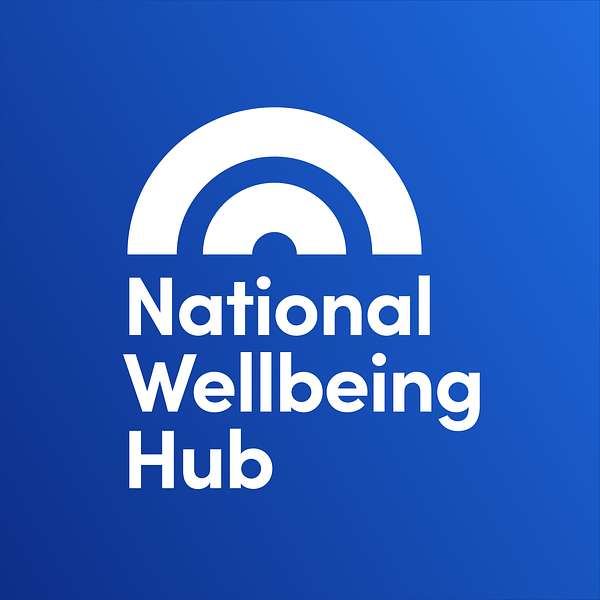
National Wellbeing Hub's Podcast
National Wellbeing Hub's Podcast
Anxiety: Practical Tips To Help You - episode 3
Tracey Moggeridge, Mindfulness Practitioner & Coach presents 'In-the-moment practices'
- So let's have a go at something else as well. Again, these are often practises that you can deploy in the moment. And the invitation, especially with anything to do with anxiety is to start small. I think we can contribute to that sense of overwhelm if we try and go big and bold, you know, a 20 minute meditation or a five mile run, but actually there are some really quick wins that we can have with some very small things that don't take up very much time. And it might be, as we demonstrated earlier, you know, just moving your toes, wiggling your fingers, getting a feel for what sensations are present in your body. Because if you're feeling things, you can't be thinking at the same time, and it might simply be a case of just wiggling your fingers and your toes, it might be that you want to broaden your gaze and look out of the window and just notice the sky. What's it like today, what colours are there? Are the clouds moving, are the trees moving? Just take 30 seconds or a minute. And there's a really lovely activity called the five finger breathing exercise. And this is using two of your senses. So your sense of touch and your breath. And so what you would do is you would use your eyes to watch what you're doing, and then your sense of touch, starting at the base of your thumb with your forefinger and just tracing very slowly using your in breath, but the outside of your thumb and then your out breath, gently tracing down the inside of your thumb, your in breath, trace up the outside of your first finger, and your out-breath, back down, in breath, middle finger. And your out-breath back down, just follow this all the way around your hand, tuning into the sensations of touch. What's it like to notice your finger tracing around your hand? Very gentle sensations. And you might want to repeat that exercise so starting at the base of your outside of your palm and going back up, your little finger and tracing that back round your hand, doing one hand at a time. Again, that's a really lovely activity to do in the moment if you notice that you're struggling with, you know, ruminating thoughts or too much going on, because when we are taxed, stressed and anxious, our brain cannot access our developed brain, our cortex, that smart part of our brain that, you know, makes really good decisions. It rather defaults to our more automated brain functions. Therefore we simply cannot think our way out of life challenges. Our brain needs a breather, and each of these activities can be really good things just to kind of put the brakes on a little bit and help you to feel a little bit calmer. And then another thing that you can do is called coherent or resonant breathing. So coherent breathing is a form of breathing that involves taking long, slow breaths at a rate of about five per minute, coherent breathing or diaphragmatic breathing helps to calm the body through its effect on the autonomic nervous system. So what you're aiming for here is a five to six second inhale, and then an equal five to six second exhale. But for many of us anxiety suffers, actually breathing could be quite a tricky practise. So the invitation might be just to take smaller inhales, starting with maybe three or four, whatever is comfortable for you, work with your body. So you would take an inhale and then an exhale. Another inhale and an exhale. And see with your practise if you can invite longer, slower inhale and exhales, and just do that for a minute. And then just spend a few seconds just seeing how you feel after the practise. When you've completed your rounds, then you might want to just simply rest your hand on your thighs, your palm upwards, taking normal, natural breaths and being mindful of any subtle changes in your energy or in your mind that you notice. For some, a breathing technique where we focus on drawing out the exhale so that that's actually slightly longer than the inhale, can have a very relaxing and tranquillising effect, but have a play and see what works for you. If you notice that breathing is actually a challenge in the moment, then the other thing that you do is actually bring yourself out of a breathing practise and start to look around the room. You might want to notice a colour. You might want to tune into how many shades of red that you can see, or you might want to just tune into your sense of touch as we did earlier, you might want to feel the surface of perhaps your desk or your clothing underneath your fingers. With a sense of curiosity, just being aware and present in just for that moment. And what we may find is that relaxation occurs when we aren't actually striving for it.